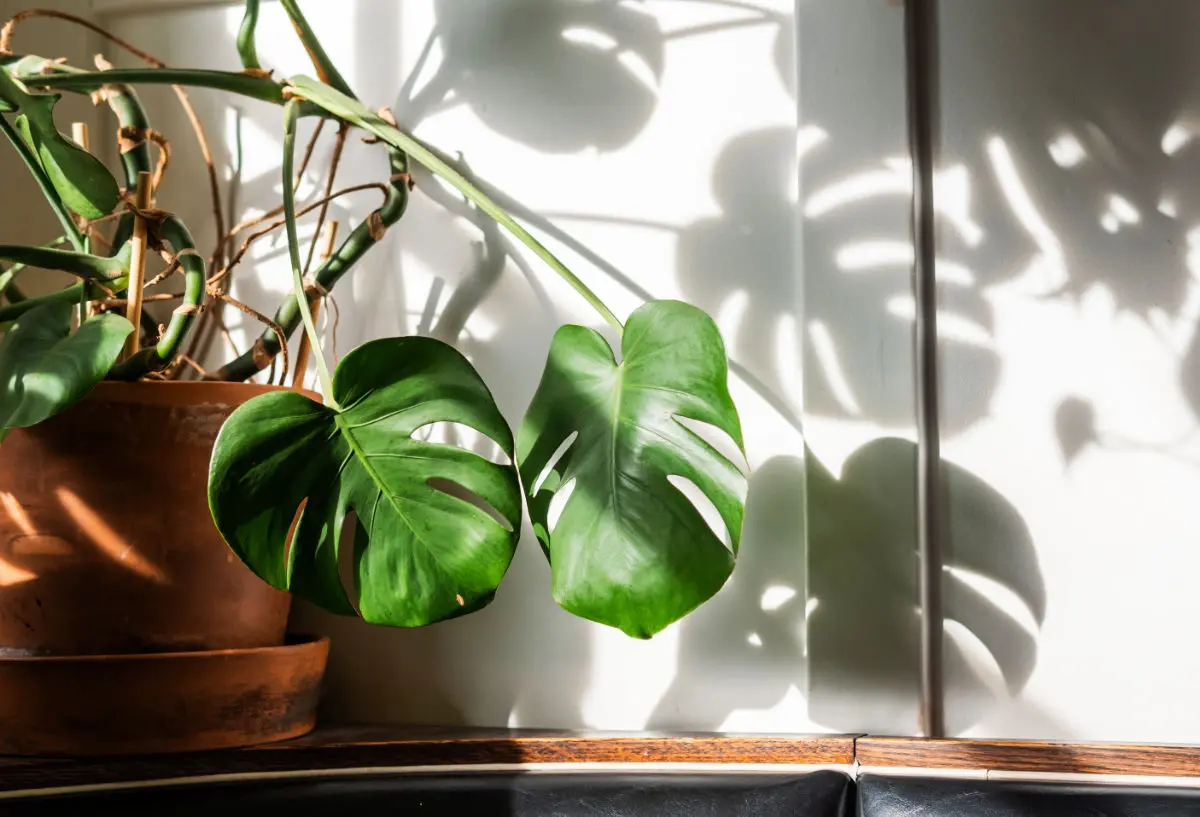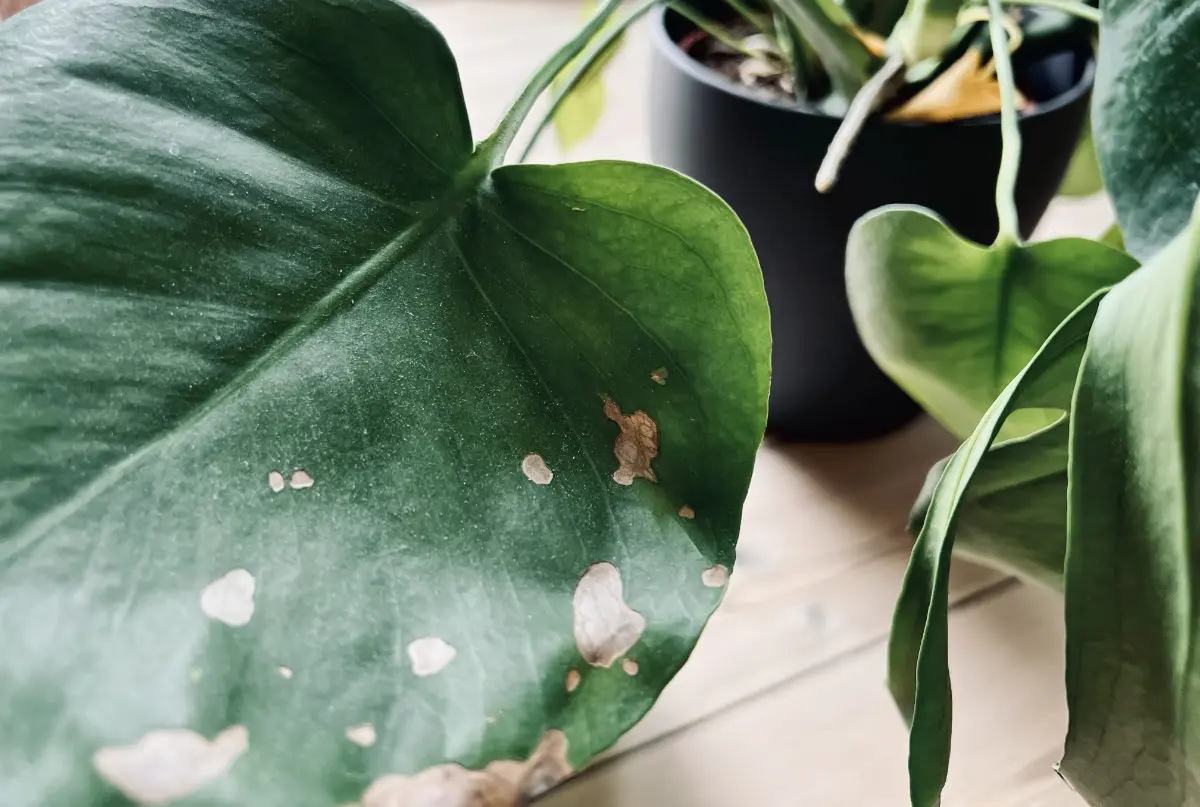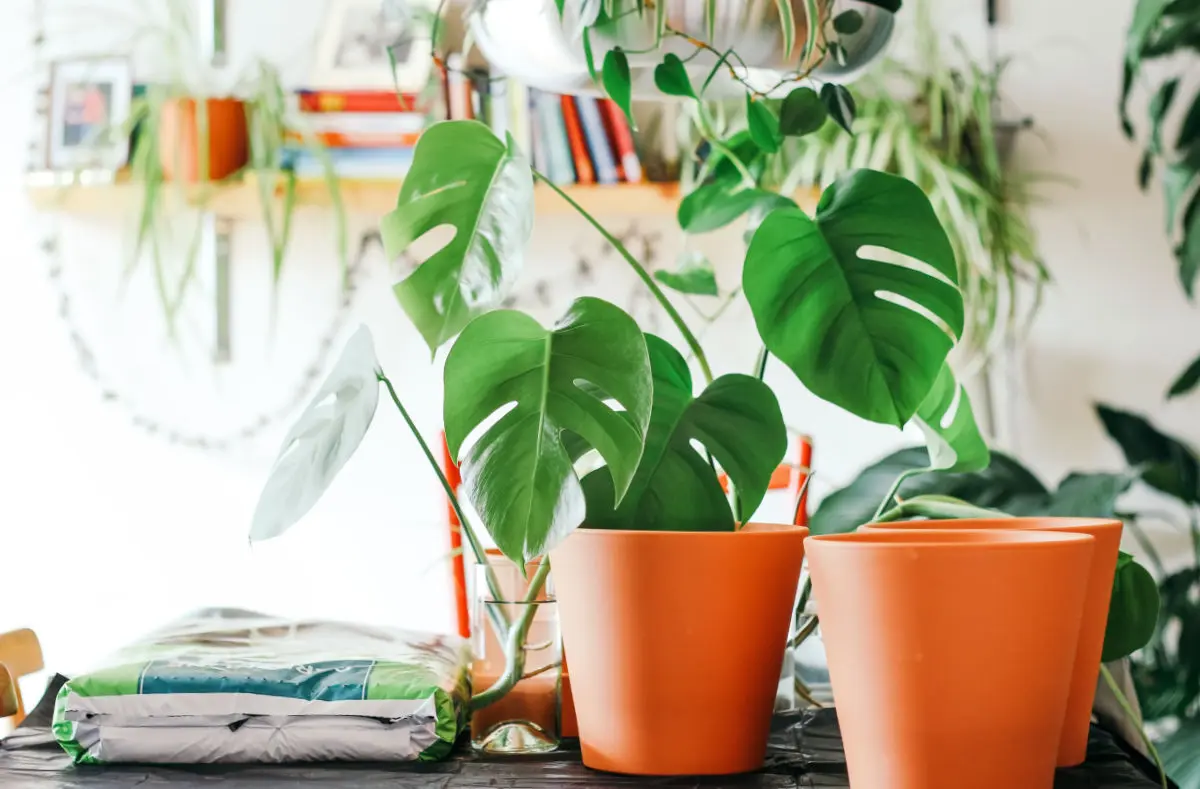Monstera Fertilizer: Everything You Need to Know
Fertilizing a Monstera plant can be essential for its growth and overall health. Find out the best practices and techniques on how to properly fertilize your Monstera and keep it thriving.
By Tobias Holm
Are you a proud plant parent who wants to take their Monstera game to the next level? Look no further.
In this ultimate guide to Monstera fertilizer, we have compiled everything you need to know about giving your beloved Monstera the nutrients it craves. Monstera plants are known for their iconic and striking foliage, but to achieve those vibrant leaves, proper fertilization is key.
Whether you are a beginner or an experienced green thumb, understanding the ins and outs of Monstera fertilizer will help you achieve optimal growth and keep your plant happy and healthy. From choosing the right type of fertilizer to understanding the right application techniques, we've got you covered.
Understanding the Importance of Fertilizing Monstera Plants
Monstera plants, with their iconic leaves, have become a popular choice for plant enthusiasts.
However, to achieve those vibrant leaves, proper fertilization can be essential. Fertilizing your Monstera plant provides it with the essential nutrients it needs to grow and thrive. These nutrients include nitrogen (N), phosphorus (P), and potassium (K), as well as iron (Fe), magnesium (Mg), and zinc (Zn). Fertilizing your Monstera regularly ensures that it receives a balanced diet and stays healthy.
Fertilizing your Monstera also promotes overall growth and helps it develop strong roots, stems, and leaves. It enhances the plant's ability to produce chlorophyll, the pigment responsible for the green coloration of leaves, which in turn aids in photosynthesis. Additionally, proper fertilization can improve the plant's resistance to pests and diseases, making it more resilient.
It's important to note that while Monstera plants can benefit from fertilization, over-fertilization can be harmful. It's crucial to strike a balance and provide your plant with the right amount of nutrients at the right time.
Let's explore the different types of fertilizers available for Monstera plants and how to choose the right one.
Different Types of Monstera Fertilizers
When it comes to fertilizing your Monstera, you have various options to choose from. The most common types of fertilizers for Monstera plants are:
- Liquid Fertilizers: Liquid fertilizers are popular among plant enthusiasts due to their ease of use and quick absorption by the plant. They are available in concentrated forms and can be diluted with water according to the manufacturer's instructions. Liquid fertilizers provide a balanced mix of nutrients and are suitable for regular fertilization.
- Granular Fertilizers: Granular fertilizers come in the form of small pellets or granules. They are typically applied directly to the soil and slowly release nutrients over time. Granular fertilizers are convenient for long-term fertilization, as they provide a slow and steady supply of nutrients to the plant.
- Slow-Release Fertilizers: Slow-release fertilizers are designed to release nutrients gradually over an extended period. They usually come in the form of coated pellets or spikes and can provide nutrients for several months. Slow-release fertilizers are ideal for those who prefer a set-it-and-forget-it approach to fertilization.
Now that you know about the different types of fertilizers available, let's dive into how to choose the right fertilizer for your Monstera plant.
Choosing the Right Fertilizer for Your Monstera Plant
When selecting a fertilizer for your Monstera, it's essential to consider its nutrient requirements, the type of fertilizer, and your personal preferences.
Here are a few factors to keep in mind:
- Nutrient Ratio: Monstera plants generally require a balanced fertilizer with a ratio of N-P-K (nitrogen, phosphorus, and potassium) that is equal or close to 1:1:1. This balanced ratio ensures healthy growth and overall plant development. However, during the plant's growth phase, a slightly higher ratio of nitrogen (N) can promote lush foliage.
- Water-Soluble vs. Slow-Release: Consider whether you prefer a water-soluble fertilizer that requires frequent applications or a slow-release fertilizer that provides a continuous supply of nutrients. Water-soluble fertilizers offer more control over nutrient levels but require more frequent monitoring and application.
- Organic vs. Synthetic: Choose between organic and synthetic fertilizers based on your gardening philosophy. Organic fertilizers are derived from natural sources and promote soil health, while synthetic fertilizers are manufactured and provide precise nutrient ratios. Both options can be suitable for Monstera plants, so it's a matter of personal preference.
Once you have chosen the right fertilizer for your Monstera, it's important to know how to properly apply it.
Let's explore the best techniques for fertilizing your Monstera plant.
How to Fertilize Your Monstera Plant
Fertilizing your Monstera plant involves a few simple steps to ensure proper nutrient absorption.
Here's a step-by-step guide:
- Dilute the Fertilizer: If using a liquid fertilizer, follow the manufacturer's instructions to dilute the concentrate with water. Ensure that you mix it thoroughly to achieve a well-balanced solution.
- Water the Plant: Before applying the fertilizer, water your Monstera plant thoroughly. This helps prevent fertilizer burn and allows the roots to absorb the nutrients more effectively.
- Apply the Fertilizer: Gently pour the diluted fertilizer solution onto the soil around the base of the plant. Avoid applying the fertilizer directly onto the leaves, as it may cause damage or leave residue.
- Adjust the Frequency: The frequency of fertilization depends on various factors such as the type of fertilizer, season, and growth rate of your Monstera plant. As a general guideline, fertilize your Monstera every 2-4 weeks during the growing season (spring and summer) and reduce the frequency to once every 4-6 weeks during the dormant period (fall and winter).
By following these steps, you can ensure that your Monstera receives the right amount of nutrients without causing any harm. However, it's important to be aware of signs of over-fertilization and how to correct them.
Frequency and Timing of Fertilization
While fertilizing your Monstera is crucial for its growth, over-fertilization can be detrimental to its health.
Signs of over-fertilization include:
- Leaf Burn: If the tips of your Monstera's leaves turn brown or black, it may be a sign of fertilizer burn. This occurs when the concentration of salts in the soil becomes too high.
- Stunted Growth: Over-fertilization can lead to stunted growth, as excessive nutrients can inhibit the plant's ability to absorb water and other essential elements.
- Wilting or Yellowing Leaves: If your Monstera's leaves appear wilted or yellow, it may be a sign of nutrient imbalances caused by over-fertilization.
If you notice any of these signs, it's crucial to take immediate action to correct the issue. Here's what you can do:
- Flush the Soil: Water your Monstera thoroughly to flush out any excess salts or nutrients from the soil. This helps restore a healthy balance.
- Reduce Fertilizer Frequency: Adjust your fertilization schedule by reducing the frequency or concentration of the fertilizer. Give your plant some time to recover before resuming regular fertilization.
- Monitor Soil Moisture: Over-fertilization can lead to imbalances in soil moisture levels. Ensure that you are not overwatering your Monstera, as it can exacerbate the issue.
By paying attention to the signs of over-fertilization and taking corrective measures, you can maintain a healthy and thriving Monstera plant.
However, there are some common mistakes you should avoid when fertilizing your Monstera.
Common Mistakes to Avoid When Fertilizing Monstera Plants
To ensure optimal fertilization, it's important to avoid these common mistakes:
- Over-Fertilizing: Applying too much fertilizer or fertilizing too frequently can harm your Monstera. Stick to the recommended dosage and frequency to prevent nutrient imbalances.
- Under-Fertilizing: On the other hand, under-fertilizing can lead to nutrient deficiencies and hinder your Monstera's growth. Follow the recommended fertilization schedule to provide your plant with the necessary nutrients.
- Applying Fertilizer to Dry Soil: Fertilizers are best applied to moist soil to prevent root burn and ensure proper nutrient absorption. Always water your Monstera before fertilizing.
- Neglecting Soil pH: Monstera plants thrive in slightly acidic to neutral soil (pH 6-7). Test your soil's pH regularly and adjust it if necessary to create an optimal environment for your plant.
- Ignoring Environmental Factors: Factors such as light intensity, temperature, and humidity can affect your Monstera's nutrient requirements. Consider these factors when determining your fertilization schedule.
Now that you are aware of the common mistakes to avoid, let's explore some organic and natural alternatives to chemical fertilizers for Monstera plants.
Organic and Natural Alternatives to Chemical Fertilizers
If you prefer an organic or natural approach to fertilization, there are several alternatives available for your Monstera plant. These options provide nutrients while promoting soil health and sustainability.
Here are a few examples:
- Compost: Compost is a nutrient-rich organic material made from decomposed plant matter. It improves soil structure, retains moisture, and releases nutrients slowly over time. Incorporate compost into your Monstera's soil during repotting or as a top dressing.
- Worm Castings: Worm castings, also known as vermicompost, are the excrement of earthworms. They are rich in nutrients and beneficial microorganisms that enhance soil fertility. Mix worm castings into the soil or use them as a liquid fertilizer by steeping them in water.
- Manure Tea: Manure tea is a liquid fertilizer made by steeping animal manure in water. It provides a balanced mix of nutrients and can be used as a foliar spray or soil drench. Dilute the manure tea before applying it to prevent burning the roots.
These organic alternatives offer a sustainable and eco-friendly way to fertilize your Monstera while enriching the soil. Experiment with different options to find what works best for your plant.
Other Care Tips for Healthy Monstera Plants
In addition to proper fertilization, there are a few other care tips to keep your Monstera plant healthy and thriving:
- Adequate Lighting: Monstera plants thrive in bright, indirect light. Place your plant near a window with filtered sunlight or use artificial grow lights to provide the necessary light intensity.
- Proper Watering: Water your Monstera when the top inch of soil feels dry. Ensure proper drainage to prevent waterlogged roots, which can lead to root rot.
- Humidity Levels: Monstera plants prefer moderate to high humidity levels. Mist the leaves regularly or use a humidifier to create a humid environment, especially in dry climates.
- Pruning and Support: Prune your Monstera regularly to promote bushier growth and remove any damaged or yellowing leaves. Provide support, such as a moss pole or trellis, to encourage aerial root growth and create a stunning display.
By following these care tips and incorporating proper fertilization techniques, you can create an ideal environment for your Monstera to thrive.
Conclusion and Final Tips for Successful Monstera Fertilization
You've now learned everything you need to know about fertilizing your Monstera plant. By understanding the importance of fertilization, choosing the right fertilizer, and following proper application techniques, you can provide your Monstera with the nutrients it needs to flourish.
Remember to fertilize your Monstera regularly, but avoid overdoing it. Pay attention to the signs of over-fertilization and make adjustments as necessary. Avoid common mistakes and consider organic alternatives if you prefer a natural approach.
Lastly, don't forget to provide your Monstera with the care it deserves, such as proper lighting, watering, and maintaining humidity levels. Prune and support your plant to achieve the desired aesthetics.
With this ultimate guide, you are well-equipped to transform your Monstera into a lush masterpiece.
Happy fertilizing, and may your Monstera thrive and bring joy to your indoor jungle.



